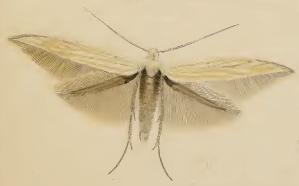
Silene is a genus of flowering plants in the family Caryophyllaceae. Containing nearly 900 species, it is the largest genus in the family. Common names include campion and catchfly. Many Silene species are widely distributed, particularly in the northern hemisphere.

Saponaria is a genus of flowering plants in the family Caryophyllaceae, native to Asia and Europe, and are commonly known as soapworts. They are herbaceous perennials and annuals, some with woody bases. The flowers are abundant, five-petalled and usually in shades of pink or white. The genus is closely related to the genus Silene, being distinguished from these by having only two styles in the flower. It is also related to Gypsophila, but its calyx is cylindrical rather than bell-shaped.

Silene armeria, commonly known as the Sweet William catchfly, is a species of plant in the family Caryophyllaceae. Originally a native of Europe, it has become widespread in the United States. Perennial in USDA plant hardiness zones 5 to 8. A small-growing form is known as dwarf catchfly. The name comes from the way in which small insects are trapped by the sticky sap exuded onto the stem. However it is not currently regarded as a carnivorous plant, though it has been identified as a carnivorous plant in the past.

Silene latifolia subsp. alba, the white campion is a dioecious flowering plant in the family Caryophyllaceae, native to most of Europe, Western Asia and Northern Africa. It is a herbaceous annual, occasionally biennial or a short-lived perennial plant, growing to between 40–80 centimetres tall. It is also known in the US as bladder campion but should not be confused with Silene vulgaris, which is more generally called bladder campion.

Silene dioica, known as red campion and red catchfly, is a herbaceous flowering plant in the family Caryophyllaceae, native throughout central, western and northern Europe, and locally in southern Europe. It has been introduced in Iceland, Canada, the US, and Argentina.

The Coleophoridae are a family of small moths, belonging to the huge superfamily Gelechioidea. Collectively known as case-bearers, casebearing moths or case moths, this family is represented on all continents, but the majority are found in temperate areas of the Northern Hemisphere. They are most common in the Palearctic, and rare in sub-Saharan Africa, South America, and Australia; consequently, they probably originated in northern Eurasia. They are relatively common in houses, they seek out moist areas to rest and procreate.

Coleophora is a very large genus of moths of the family Coleophoridae. It contains some 1,350 described species. The genus is represented on all continents, but the majority are found in the Nearctic and Palaearctic regions. Many authors have tried splitting the genus into numerous smaller ones, but most of these have not become widely accepted.

Silene nutans is a flowering plant in the genus Silene, most commonly known as Nottingham catchfly.

Silene undulata is a plant native to the Eastern Cape of South Africa.

Coleophora galbulipennella is a moth of the family Coleophoridae or leaf miners. It is known from Europe, where it is found from Sweden to Spain, Italy and Greece and from Great Britain to southern Russia.

Eupithecia venosata, the netted pug, is a moth of the family Geometridae. It was first described by Johan Christian Fabricius in 1787. It is found across the Palearctic realm from Portugal and Morocco in the west to the Lake Baikal in Siberia and Afghanistan and Pakistan in the east.

Coleophora hackmani is a moth of the family Coleophoridae. It is found from northern Europe to the eastern part of the Palearctic realm. It has also been recorded from the Iberian Peninsula.
Coleophora nubivagella is a moth of the family Coleophoridae. It is found from Germany and Poland to the Pyrenees, Italy, North Macedonia and Romania.

Coleophora albella is a moth of the family Coleophoridae. It is found in most of Europe.

Coleophora silenella is a moth of the family Coleophoridae. It is found in most of Europe, except Fennoscandia, Ireland, Greece, Portugal and Ukraine.
Coleophora nutantella is a moth of the family Coleophoridae. It is found from Fennoscandia to Spain, Sicily and Greece and from France to the Baltic states, Poland, Slovakia, Hungary and Romania. It is also found in Asia Minor.
Coleophora apicialbella is a moth of the family Coleophoridae. It is found in the United States, including Ohio, Cincinnati and Indiana.











